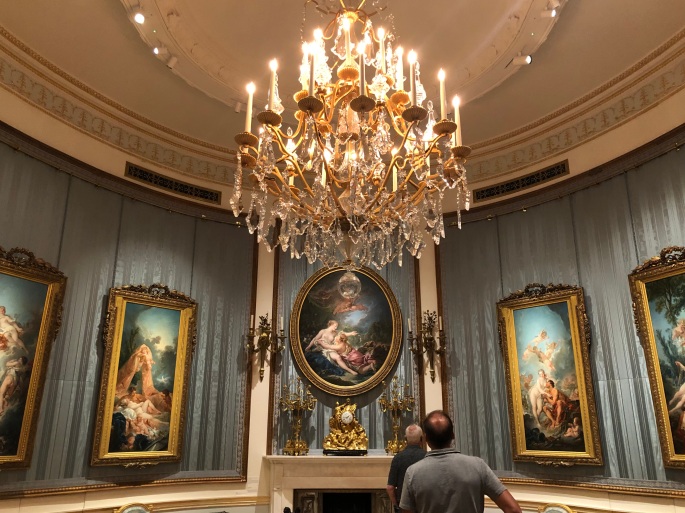
I have spent many a Sunday afternoon strolling between The Wallace Collection’s grand rooms, each time being impressed by a different aspect of its multitude of cultural dimensions. Nestled away from the hustle and bustle of Oxford Street, in the heart of London, The Wallace Collection stands as a testament to the exquisite taste and discerning eye of its founders. This unique museum, located in Hertford House, Manchester Square, is home to an extensive collection of fine and decorative arts from across Europe.
In this post, I am going to explore the rich history and artistic treasures held by The Wallace Collection and delve into the subject and context of some of my favourite pieces.
Brief historical overview…
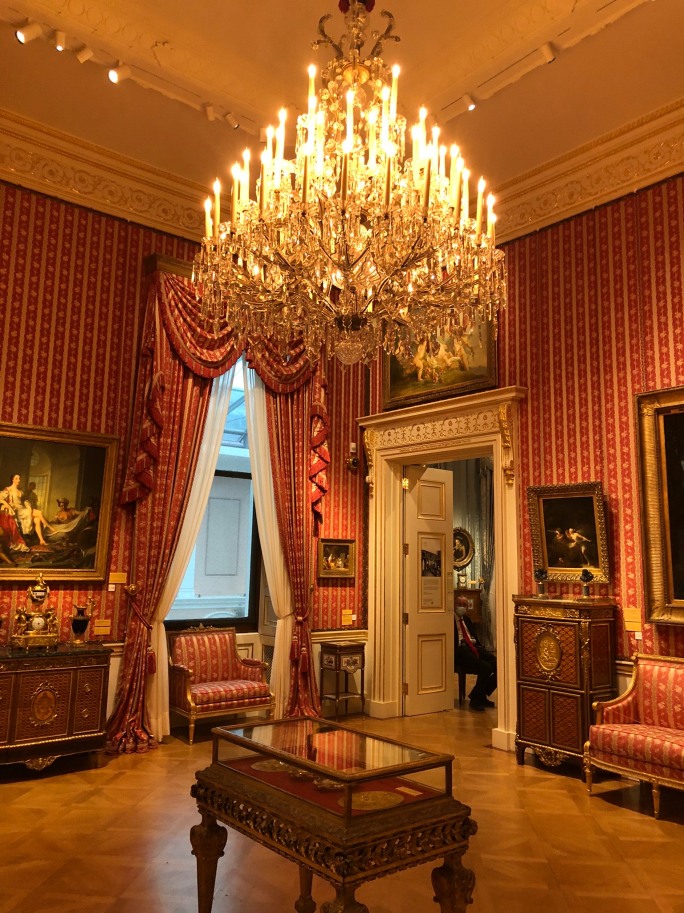
The Wallace Collection originates from the personal collection of the Marquesses of Hertford and Sir Richard Wallace. The Hertford family’s passion for art and collecting spanned generations, resulting in this magnificent assortment of paintings, sculptures, furniture, and porcelain. In 1897, Sir Richard Wallace bequeathed this remarkable collection to the British nation, ensuring its preservation and accessibility for generations to come.
Hertford House, the elegant setting that houses The Wallace Collection, itself holds architectural prestige. Built in the 18th century, Hertford House showcases a fusion of French and English architectural styles, featuring splendid galleries and opulent interiors that provide the perfect backdrop for the museum’s masterpieces. Strolling through the grand rooms is a journey back in time, heightening the allure of the artworks on display.
The captivating collection…
One of the highlights of The Wallace Collection is its exceptional array of European art from the 15th to the 19th centuries. Visitors can admire masterpieces by renowned artists such as Titian, Rembrandt, Velázquez, Fragonard, and Canaletto. The collection encompasses a wide range of genres, including portraits, mythological scenes, landscapes, and religious iconography.
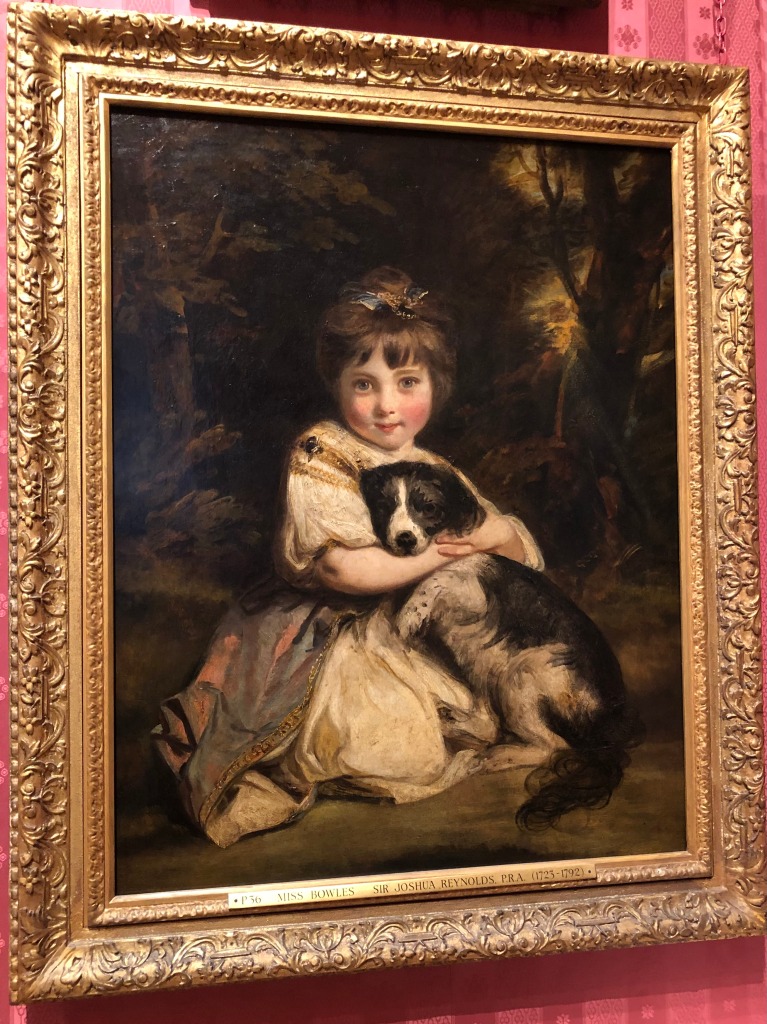
One of my personal favourites from the Collection is Joshua Reynolds’ 1775-6 portrait of ‘Miss Jane Bowles’; daughter of Oxfordshire Landowner, Oldfield Bowles. This portrait immediately caught my gaze with its evocation of a quintessential sense of the beauty of innocence. Reynolds employs his characteristic ethereal background from many of his portraits, creating a somewhat fantastical quality. Despite only being between three to four years-old when sitting for Reynolds’ painting; Miss Bowles’ deep, inquisitive eyes possess a captivating sense of confidence. This confidence perhaps lends itself to Reynolds’ evoked sense of security felt by the little girl: she is enlightened by the strength of the companionship from her pet dog amidst the unknown of the forest. Through this portrait, Reynolds thus brings to the fore the fantastical innocence of childhood that is free from the sense of fear and rationality developed through age and experience.
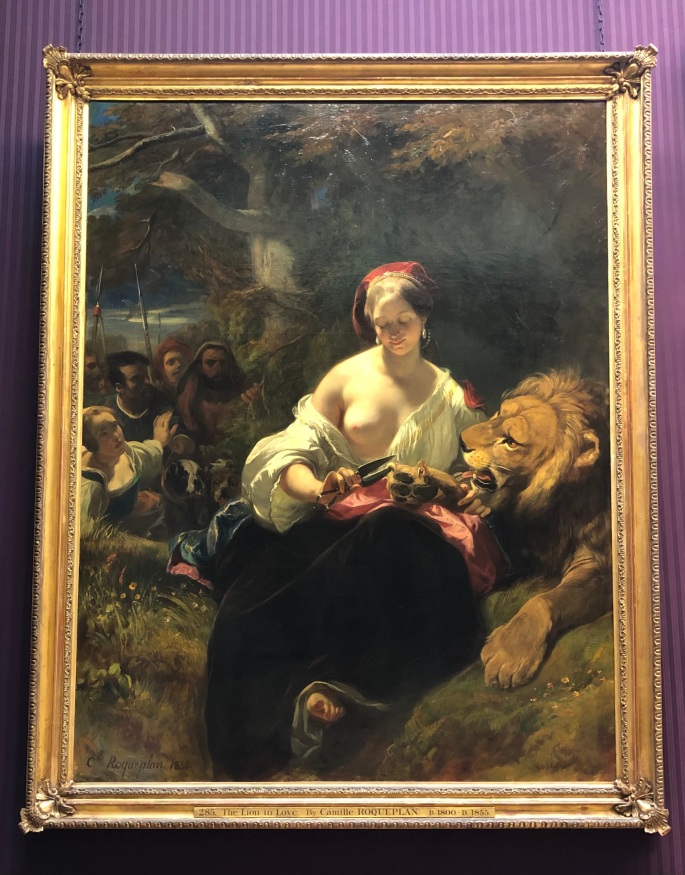
Moving on to another one of my personal favourites from the collection, Camille Roqueplan’s 1836 oil on canvas painting, ‘The Lion in Love’. When first catching sight of this painting, one is struck by the somewhat comical depiction of a lion allowing his claws to be clipped by a young shepherdess. Roqueplan depicts the tale of Le Lion Amoureux by John de la Fontaine in which the lion, having fallen in love with the young shepherdess, submissively allows her to clip his claws. Thereby, preventing him from inflicting hurt upon her. In this context, Roqueplan intricately plays with contemporary art’s preconceived notions of femininity and masculinity through his assertion of the feminine in a position of dominance whilst evoking a sense of tenderness in masculinity.
Moreover, in addition to this depiction of Fontaine’s fable, Roqueplan also alludes to the bible story of Samson and Delilah. Through cutting his hair, Delilah ultimately becomes Samson’s downfall. Considering ‘The Lion in Love’ in light of Samson and Delilah, Roqueplan’s depiction of feminine beauty appears destructive and potentially harmful in rendering the lion defenceless. Such themes of destructive yet alluring femininity form the archetypal femme fatale, which became a popularised trope in contemporary literature, film and theatre.
Delving into the decorative arts…
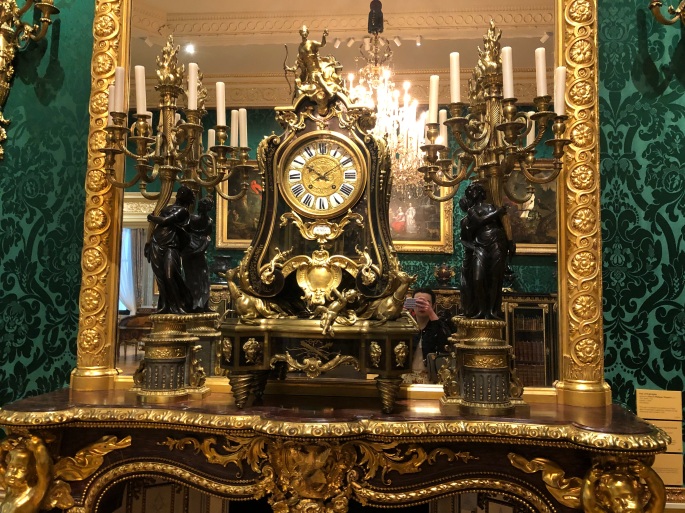
Beyond its paintings, The Wallace Collection boasts a remarkable assortment of furniture, porcelain, silverware, and exquisite objets d’art. From ornate cabinets and gilded mirrors to delicate Sèvres porcelain and intricate goldsmith works, these decorative pieces provide a glimpse into the luxurious lifestyles of European nobility throughout the centuries. I am particularly intrigued by the physical presentation of light and time. The craftsmanship and attention to detail in these objects are a testament to the skill of artisans of the past. They expertly manifest the need for the presence of light and the acknowledgement of the passing of time into fantastical ornaments of otherworldly beauty. Thus, light and time are foregrounded for the viewer and are there to be acknowledged and celebrated as opposed to merely accepted.
Final reflections…
A visit to The Wallace Collection is a journey through centuries of art, history, and culture. The museum’s diverse and extensive collection, coupled with its stunning setting, provides a captivating experience for art lovers and history enthusiasts alike. Even for those who are (ever so slightly!) museum shy, it is impossible to come away from The Wallace Collection without feeling enriched. Stepping into Hertford House feels like entering a different era. The Wallace Collection stands as a shining jewel in London’s cultural landscape, inviting visitors to immerse themselves in the splendour of artistic treasures from across Europe.

